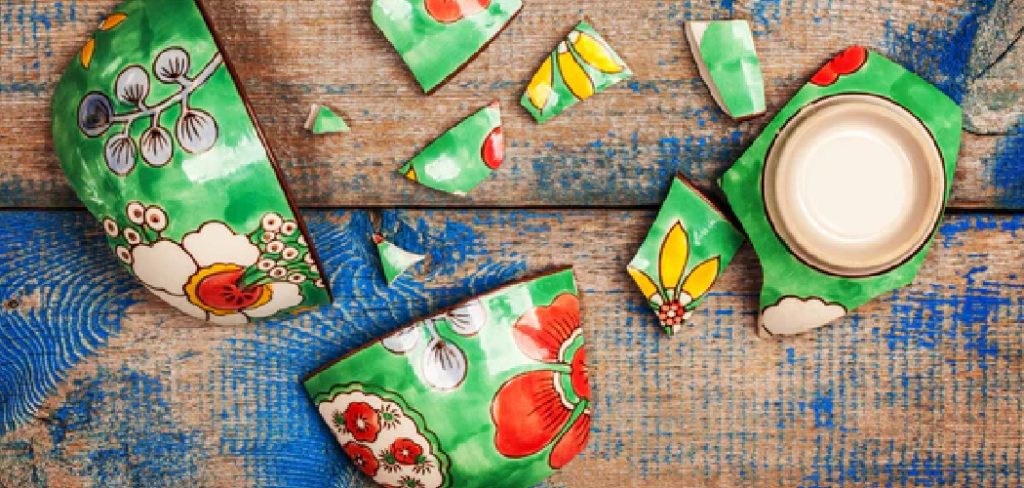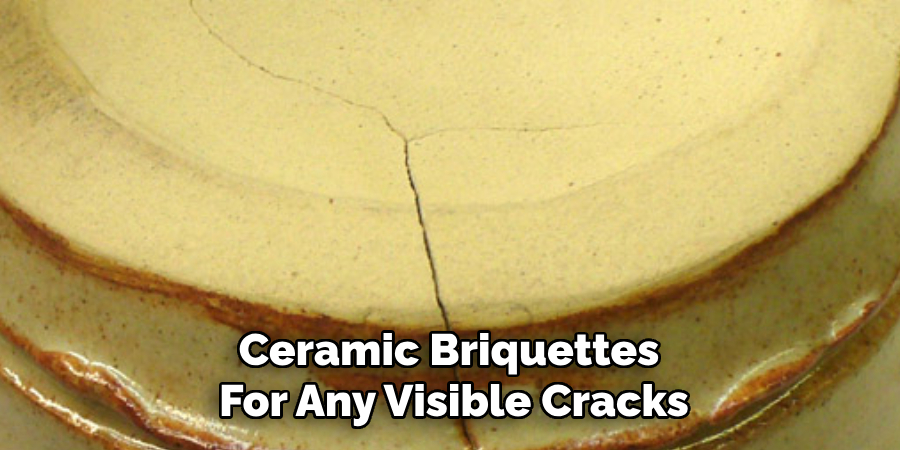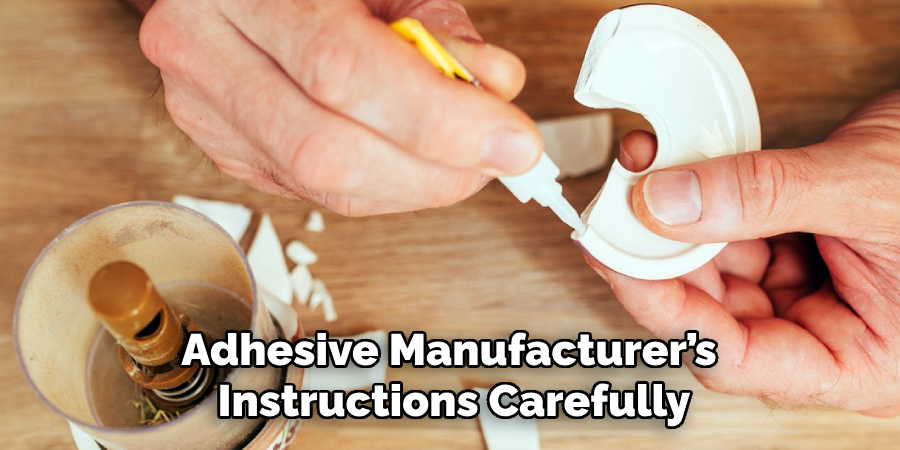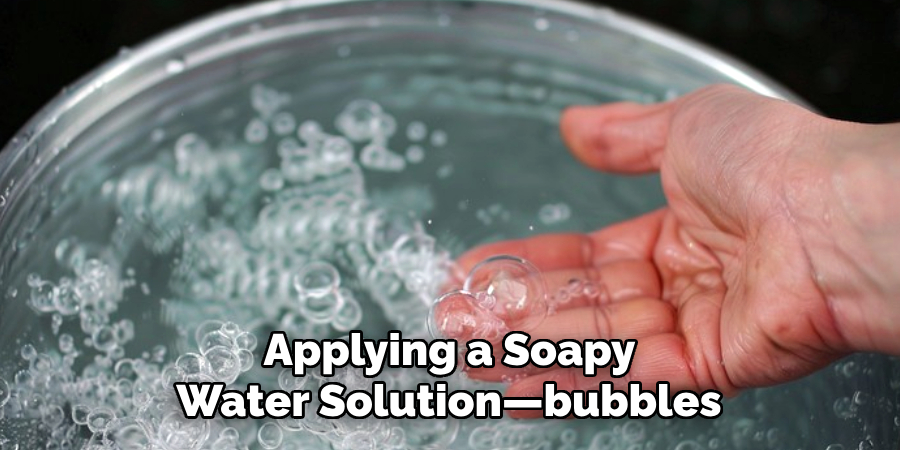Are you tired of constantly dealing with damaged ceramic briquettes in your grill or smoker? Ceramic briquetage, also known as ceramic heat shields, is essential in many grills and smokers.
Ceramic briquetage is a durable and reliable material often used in grilling and heating appliances, but over time, it can become cracked, chipped, or damaged due to wear and tear. Fixing ceramic briquetage may seem daunting, but with the right tools and methods, it’s a manageable process that can restore the efficiency and performance of your equipment.

This guide on how to fix ceramic briquetage will walk you through the steps to properly repair ceramic briquetage, ensuring safety, durability, and cost-effectiveness in the long run. Let’s get started!
What Are the Causes of Damaged Ceramic Briquetage
Before diving into the steps to fix ceramic briquetage, it’s essential to understand the common causes of damage. This knowledge will help you prevent future damage but also aid in choosing the right repair method. Here are some possible reasons why your ceramic briquettes may be damaged:
- Excessive Heat Exposure: Ceramic briquettes are designed to withstand high temperatures, but prolonged or excessive heat exposure can cause them to crack or break.
- Rough Handling: Dropping or mishandling ceramic briquettes can lead to chips and cracks. It’s essential to handle them with care during installation and removal.
- Corrosion: Constant exposure to moisture or harsh chemicals can cause corrosion, damaging, and deteriorate ceramic briquettes.
- Age: Like any other material, ceramic briquettes have a lifespan. Over time, they may become brittle and fragile, making them prone to damage.
These are just a few common reasons that can cause damage to ceramic briquettes. By identifying the root cause of the damage, you can take appropriate measures to prevent further issues.
What Will You Need?
Before you begin the repair process, gather all the necessary tools and materials. Here’s a list of what you’ll need:
- Replacement ceramic briquettes (if necessary)
- Heavy-duty gloves for hand protection
- Safety goggles to protect your eyes from debris and dust
- A hammer or mallet to remove damaged briquettes
- A flathead screwdriver or chisel to scrape off any remaining adhesive or residue
- High-temperature adhesive suitable for ceramic materials
With these tools in hand, you’re ready to start fixing your ceramic briquetage! Let’s take a look at the step-by-step process.
10 Easy Steps on How to Fix Ceramic Briquetage
Step 1. Assess the Damage
Carefully inspect the ceramic briquettes for any visible cracks, chips, or discoloration. Take note of the areas where damage is most evident, as this will guide you in determining which briquettes need to be replaced or repaired. Ensure you examine the top and bottom surfaces, as damage is not always immediately visible. If some briquettes appear only slightly damaged, you may fix them instead of replacing them entirely.

However, if you identify significant structural damage or crumbling, replacement is the safest option to ensure the efficiency and longevity of your grill. Document the extent of the damage to organize your repair process and avoid overlooking any problematic areas. Taking the time to assess the briquettes properly will help you address the issues more effectively.
Step 2. Clean the Briquettes
Before proceeding with any repairs or replacements, ensure the ceramic briquettes are clean. Use a soft brush or cloth to remove any ash, grease, or debris accumulated on their surfaces. For tougher grime, consider using a mild detergent mixed with warm water, but be sure to rinse thoroughly and allow the briquettes to dry completely before continuing. Cleaning helps you identify the extent of the damage more clearly and ensures that any repair materials adhere properly. Regular maintenance and cleaning can also prolong your briquettes’ lifespan and improve your grill’s performance.
Step 3. Replace or Repair Damaged Briquettes
After cleaning and assessing the ceramic briquettes, determine whether they can be repaired or replaced. For minor cracks, use a high-temperature adhesive designed for ceramic materials to bond the broken pieces together. Follow the adhesive manufacturer’s instructions carefully to ensure a secure and durable repair. If the briquettes are severely damaged, crumbling, or beyond repair, replace them with new ones. When purchasing replacements, ensure they are the correct size and compatible with your grill model. Properly functioning briquettes are essential for even heat distribution and efficient grilling.

Step 4. Reassemble the Grill
Once the ceramic briquettes are cleaned, repaired, or replaced, it’s time to reassemble the grill. Begin by carefully placing the briquettes back into their respective positions on the grill bed, ensuring even spacing for proper heat distribution. Next, reinstall any grills, racks, or covers that were removed during the cleaning process. Double-check that all components are securely in place before igniting the grill. Reassembling your grill correctly is crucial for optimal performance and safety.
Step 5. Test the Grill
When the grill is fully reassembled, testing it before preparing food is essential. Start by igniting the grill and setting it to a medium heat. Allow it to warm up for several minutes while observing the flame and ensuring no irregularities, such as uneven burners or excessive smoke. Check that the heat distribution is consistent across the cooking surface, which indicates that the briquettes and components are correctly aligned. If any issues arise, turn off the grill immediately and inspect for potential problems. A successful test ensures that your grill is ready for safe and efficient use.
Step 6. Maintain Your Grill
Regular maintenance is essential to keep your grill in top condition. After each use, clean the cooking grates thoroughly to remove food residue and prevent buildup. Periodically check for grease accumulation in the drip tray or other components and dispose of it safely. Inspect the burners, igniters, and gas connections for wear or damage, and replace any faulty parts promptly. Store your grill in a sheltered area or use a durable cover to protect it from the elements when not in use. Consistent maintenance will extend the life of your grill and ensure it performs reliably for years to come.

Step 7. Safety Tips for Grilling
Safety should always be a priority when using your grill. Ensure the grill is placed on a stable, flat surface, away from flammable materials like overhanging branches or walls. Keep a fire extinguisher or a bucket of sand nearby in emergencies. Avoid wearing loose clothing that could catch fire, and use heat-resistant gloves or tools when handling hot components. Never leave the grill unattended while in use, and always supervise children or pets nearby. After grilling, ensure the gas supply is turned off tightly or that charcoal is completely extinguished. Practicing these safety tips will help you enjoy grilling without unnecessary risks.
Step 8. Cleaning Your Grill After Use
Proper cleaning after grilling is essential to maintain the performance and longevity of your grill. Start by allowing the grill to cool slightly, but while it’s still warm, use a grill brush to remove any food residue or buildup from the grates. For gas grills, ensure the burners are turned off, and disconnect the gas supply before cleaning. Empty the grease tray to prevent flare-ups during your next use. For charcoal grills, safely dispose of the ash once it has thoroughly cooled. Washing the grill’s exterior with warm, soapy water can help prevent rust and keep it looking its best. Regular cleaning improves hygiene and ensures an enjoyable grilling experience every time.
Step 9. Storing Your Grill Properly
After cleaning your grill, proper storage is crucial to protect it from the elements and extend its lifespan. For gas grills, ensure all connections are secure and the supply is disconnected. Cover your grill with a weather-resistant grill cover to shield it from rain, snow, and sun exposure. Store the grill in a garage or shed during periods of non-use, especially in harsh weather conditions. For charcoal grills, remove all ashes and debris before covering or storing the grill. Proper storage will keep your grill in top condition and ready for your next cooking session.
Step 10. Inspecting Your Grill Before Use
Before firing up your grill for the next cooking session, take a moment to inspect it thoroughly. Check for any signs of rust, cracks, or damage, especially on critical components like the grates, burners, and gas connections. If you’re using a gas grill, test the gas lines for leaks by applying a soapy water solution—bubbles will indicate a leak that needs to be addressed. Ensure the grill grates are clean and properly aligned and the grease tray is empty to prevent flare-ups. A quick pre-use inspection can help ensure safety and optimal performance while grilling.

By following these steps, you can keep your grill in shape and enjoy delicious meals with friends and family for years to come.
Conclusion
Ceramic briquettes are an essential part of many grills, providing even heat distribution and enhancing the flavor of your food. If your ceramic briquettes are damaged or not functioning correctly, replacing them with new ones is best.
Remove the old, broken briquettes and thoroughly clean the grill’s grate and burner area to remove debris and grease. Then, arrange the new briquettes evenly across the grate, ensuring proper airflow and heat distribution. Regular inspection and timely replacement of ceramic briquettes can extend the life of your grill and improve its performance, providing consistent and delicious results every time you cook.
Hopefully, the article on how to fix ceramic briquetage in a grill has been informative and helpful. Happy grilling!
Specialization:
- Master of wheel-throwing, hand-building, and advanced glazing techniques
- Focus on creating both functional pottery and decorative art pieces
Recognition:
- Celebrated by collectors and art enthusiasts for creating one-of-a-kind pieces that blend artistry with functionality
- Participates in local and national exhibitions, earning accolades for his innovative designs and craftsmanship
Passion:
- Deeply committed to exploring and pushing the boundaries of ceramic artistry
- Continuously experiments with new materials, firing techniques, and artistic concepts to evolve his craft
Personal Philosophy:
- Believes in the transformative power of art, aiming to evoke emotions and connections through his ceramic creations
- Advocates for sustainability in ceramics, using eco-friendly materials and practices whenever possible


